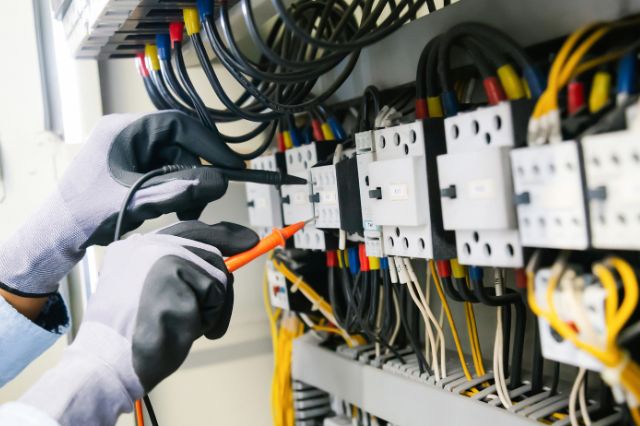From the time most of us are very young, we learn about preventive maintenance (PM). We helped our dads change the oil in our cars. We changed our AC filters. We sharpened knives, we mended fences, and we oiled the chains on our bicycles. Heck, most of us mowed lawns. I grew up in a cold part of the country and I remember “banking” homes in the wintertime. Stapling plastic or tarpaper around the base of our homes or using bales of hay or straw to do the same. Preventive maintenance is not new, and it is almost instinctive.
Professionals know maintenance is needed
Early in my career, I became a Millwright/Industrial Mechanic, and the principles of PM were generally adhered to because production (and thus, dollars) depended on it. The downtime was a business killer and PM was viewed as critical. Oddly, though, not all businesses see the value of preventive maintenance. Or maybe they do, it’s just very easy for “life to get in the way”.
Look, I get it. I’ve let my vehicle go too long between oil changes. More than once. But I know better. That being said, companies – and people responsible for equipment and building maintenance – often let PM lag. I’ve known otherwise good organizations where deferred maintenance was rampant, the majority of repairs were reactionary, and equipment was literally “run to failure”. In whose world is that an ideal system? It is more common than we would like to think, however. In 2017, deferred maintenance was at such a crisis level in Arizona’s universities that the legislature had to create a bond solution to address what had become a legitimate emergency; what some had equated to a “ticking bomb”. By no means does this problem just exist in the public sector, it is found in every type of business, in every sector of the economy. Faced with issues with funding and staffing and deadlines and supply chains, it is simply too easy to fall behind.
All systems need preventive maintenance
Buildings, campuses, and factories are made up of systems. Mechanical systems, electrical systems, plumbing systems. Lighting systems. Building controls. With IoT, these systems become more and more integrated and with integration, more vulnerable to catastrophic failure. Of all the systems, none is more critical than the electrical system. In a modern environment, almost everything begins with electricity. It is no coincidence either, that electrical systems can pose the most danger to life and property as well. Electrical systems contain many components that are safety components and when those devices fail, results can be devastating. Ironically, while electrical systems can be the most vexing and mysterious to maintenance supervisors and facilities managers; electrical systems have the most guidance (and regulation) in place to keep them functioning properly.
OSHA, IEEE, NFPA, and NETA all provide regulations, guidelines, and best practices when it comes to electrical commissioning, maintenance, testing, safety, and more. That myriad of information is a double-edged sword, however. Navigating what is an outright requirement versus what is a best practice can be daunting. That is where C-3 Engineering comes in. Whether you have no knowledge or advanced, large company or small they can help you determine what is needed. What you have to do, what you should do, and what you might consider doing. They can provide a full suite of support at every level – design, testing, maintenance, safety requirements – whatever your company needs.
The financial benefits of maintenance
But what about the cost? We all know about fines and lawsuits. We dread the thought of personal injury, or worse – and downtime, even in the most non-critical environments, is inconvenient and annoying. Independent maintenance studies have indicated the following average savings can be achieved by carefully leveraging the advantages of each of the three maintenance philosophies:
- Return on investment: up to 3 times
- Reduction in maintenance costs: up to 30%
- Elimination of breakdowns: up to 75%
- Reduction in downtime: up to 45%
- Increase in production: up to 25%
Finally, various studies indicate that the true cost of a machine breakdown is estimated as between four to 15 times the maintenance costs (of maintenance or repairs carried out during or as a result, of Preventive Maintenance). If those numbers don’t make the case for PM, I don’t know what will.
The importance of preventive maintenance
I’ve been an Industrial Mechanic, Maintenance Supervisor, and Facilities Manager. I’ve been in organizations that took preventive maintenance very seriously, and some that didn’t. I’ve worked in organizations that tracked the data, and ones that didn’t, or didn’t have the means. At the end of the day, the evidence is overwhelming in favor of PM. I’ve had a medium-voltage disconnect fail. I’ve had transfer switches not work as intended. I have been on the site of a catastrophic safety transgression. Every single event could have been prevented.
Especially in Arizona where sun, dust, and crazy monsoon storms are hard on buildings, grounds, and of course – electrical gear. Regular maintenance and testing are paramount. As a professional, you need to constantly beat the drum of an effective preventive maintenance program. For your customers, your employees, your stockholders, and your regulators – the value of PM has been proven over and over again.
Guest author Marshall MacFarlane is the Parks and Facilities Manager at the Town of Gilbert.


